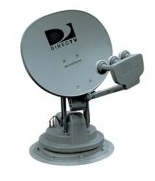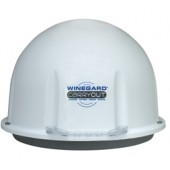RV Satellite Buyers Guide
Satellite Systems
Satellite systems are becoming a very integrated part of the RV’ing World. Choosing the right satellite can be a bit overwhelming with all the different models and features that are available. This guide is to help you choose one that will be most convenient and suite the needs of you and your family.
There are a couple of different important things to look at when choosing a satellite. First is whether you are in need of a Dish System or a portable satellite, commonly referred to as a “carry-out”. Identifying the type of system that you need will be your first set in choosing a satellite.
Dish System |
Carry-Out |
 |
 |
A Dish system is like one that you would commonly see in home applications. A location is selected and the satellite is mounted and will remain there during use and during travel. This is beneficial if you would like to keep your system hooked up and like simplicity of always having your satellite ready when you are. It is common for RV owners to have these types of systems if the majority of your traveling is done to camp grounds that are mostly in unobstructed areas.
A carry-out satellite is a portable satellite system. These systems do require some set up once you have reached your destination as they do not stay plugged in at all times. Carry-Outs are extremely popular for the crowd that does more dry camping in heavily wooded or obstructed areas. The portability of these types of satellites allows you to move the satellite instead of moving and adjusting your entire rig if a clear view of the sky is not available. Most carry-out satellites come with a 50’ cable allowing you to have total freedom in choosing the place setting for the unit. Even though this is portable unit there are ladder mount kits available for easily converting these into a more permanent type satellite while still having the flexibility and option of its portability. There are also tri-pods available to keep your satellite up and out of the weather if there happens to be a heavy rain leading to running water, or even snow fall.
Your next decision will need to be made according to the amount of time and effort you want to put into setting up your satellite system upon arrival vs. your budget allotted for your satellite system. You will have the choice between a manual satellite and a fully automatic unit.
A manual unit will require you to find the satellites location in the sky by using a provided guide on the television or in some cases a hand held instrument. If weather should change or signal is lost you satellite will need to be re-calibrated by hand.
An automatic satellite is just like the name a true fully automatic satellite. Simply turn on the unit and it will automatically find the satellites for you. No need for finding the proper alignment or locating the correct position in the sky, this type of satellite does all the work for you! The fully automatic truly is a hassle free more convenient approach to satellite TV.
The last thing one might want to look at when choosing a satellite are its operational capabilities. There are two types of satellite categories under this feature. You have stationary satellites and in-motion satellites. These features correspond directly to their names. A stationary satellite can only be used while parked or sitting in a stationary position while an in motion satellite can be used “in motion”. The in-motion satellite has the capability staying logged onto and sending and receiving a signal while it is in motion or moving. It is not recommended that the driver of any moving vehicle should watch or make use of any function on the television while operating the vehicle. This could not only cause an accident and harm to your RV but also could result in the injury of yourself, your family or others.
Dyer’s carries satellites with different combinations of the functions and features described in this guide. It’s time to take a look at what we have to offer and get started in choosing the right satellite for you and your family!
